Our Experts Are Your Experts—A Consulting Team That Talks Shop with Clients

Dave Rogers and three other ARUP employees were on a shuttle bus headed to the Fort Lauderdale airport. They had just finished up visits to five hospital labs over two and a half days for a client. Despite the humidity and long days, Rogers and his colleagues—Leslie Hamilton, Clint Wilcox, and Jerri Turner-Jacyno—were bantering back and forth, excited.
“We were amazed by all that we were able to do,” recalls Rogers, group manager over several support areas at the time. “So many efficiency improvements came out of the visit.”
They brainstormed: Why don’t we do this for other clients? What would this team look like? What other areas of expertise could ARUP share that would directly help a laboratory improve?
What started as a trip five years ago to woo a struggling client, one that ARUP was at risk of losing, set in motion what would become a well-crafted consulting team that today invigorates the laboratory processes of a half dozen of ARUP’s clients each year. The Consultative Services department pulls people in from other areas of the company to create these teams.
Members of the team are chosen based on what a client needs—often these needs are pain points that ARUP’s account executives have homed in on while working with their clients. Perhaps a client has requested someone to advise them on specimen tracking or courier/transportation or microbiology processes.
They brainstormed: Why don’t we do this for other clients? What would this team look like? What other areas of expertise could ARUP share that would directly help a laboratory improve?
“Their needs can be quite different, so how we can help them is very customized,” says Kevin Swallow, Client Relations Division manager.
“These visits deepen the relationship with our clients,” adds Leigh Huynh, MBA, senior healthcare consultant at ARUP, who oversees these visits. “They really begin to see us more as a partner who can help them solve problems.”
Questions Home in on Solutions
Admittedly, it can be unnerving when a handful of strangers walk into your lab, watch you work, ask a bunch of questions, all the while jotting down notes. Moments made for sweaty armpits.
“As soon as the staff knows we’re not there to cut jobs or take over or steal their business, they are welcoming,” says Huynh, with a laugh.
“That might mean showing them how to bring more tests in-house,” says Jason Goodfellow. “Sometimes we get incredulous looks, but there will always be reference tests that they will need, and they can send those to us.” Goodfellow oversees the University of Utah Hospital’s laboratory operations.
The consultative services team talks to as many people as they can that are at the bench and doing the hands-on work. Management steps away, so individuals will talk more freely. By the end, the ARUP team knows the lab staff well.
Examples of the types of questions asked include: What takes up the most time in your day? What is the task that you most dread? What is your daily work flow, and why does it work that way? What suggestions do you have? What would you change?
“Often, what we find is that everybody is doing things differently even though everybody thinks they are doing it the same,” says Huynh. Oftentimes, there are multiple ways to do the same things; the consultative services team guides clients toward best practices.
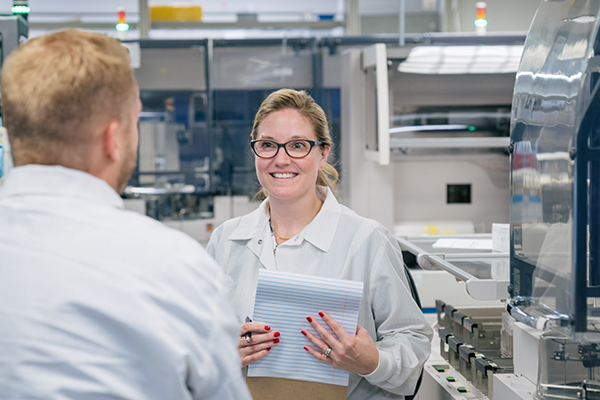
A full continuum of input and perspectives are gleaned from those in the lab and those using the lab and how it all impacts patient care. Along with laboratorians, the consultative team also talks to pathologists, hospitalists, ER physicians, directors, among others. If needed, they will attend 4 a.m. morning rounds with phlebotomists or come in at night to observe the night shift lab operations.
At the Medical University of South Carolina, ARUP was hired to provide consulting for a lab remodel. “They spent four days here analyzing all the labs—all the front end operations. They weren’t only focused on mapping floor plans, but were also watching the interactions between labs,” says Lori Gauld, director of operations for Pathology and Laboratory Medicine. “The recommendations we received were not just regarding space issues, but also suggested things we could work on prior to remodeling.”
The Teacher Is the Student; The Student is the Teacher
Clients receive robust reports, averaging around 35–40 recommendations. This tangible, third-party input is sometimes all a client needs to sway leadership to take action on laboratory concerns that have been simmering on the back burner.
This was helpful for the Medical University of South Carolina who had been pushing for a laboratory remodel for their central processing. “We were able to take a plan to our space committee and get permission to move forward,” says Gauld. “ARUP helped us articulate and get it all on paper—when you see it on paper, you understand where all the inefficiencies are.”
“It’s all about matching what their needs are with all the expertise and depth of experience we have here.”
Sandy Richman, Director, Consultative Services
Roger’s explains that, primarily, three areas are covered in the consulting outreach: removing interferences, improving efficiencies, and improving quality. Rogers, who oversees ARUP’s central facility Specimen Processing Department, developed a scoring system for clients, allowing them to rank the “ease” and the “impact” involved in implementing recommendations.
This visual scorecard helps them prioritize and decide whether or not to act on a recommendation. For example, if a laboratory can’t handle incoming calls, a recommendation might be to implement a client relations management program—a hefty purchase. On a scale from one to three, this is a “one,” meaning it’s difficult to implement. However, the impact of such a program would be a “three,” the highest ranking. Add the two scores together for a final score of four. “If the final score is a ‘five’ or a ‘six’, then we’ll suggest they move forward with the recommendation,” says Rogers.
“The scorecard showed us some low hanging fruit and validated for us that we were on the right path with changes we wanted to make,” says Laura Bubla, director of Laboratory Services for SSM Health in Janesville, Wisconsin. Improvements in employee scheduling was an area they were especially interested in exploring.
“We were able to take a plan to our space committee and get permission to move forward… ARUP helped us articulate and get it all on paper —when you see it on paper, you understand where all the inefficiencies are.”
Lori Gauld, Director of Operations, Pathology and Laboratory Medicine, Medical University of South Carolina
“We wanted to hear from ARUP what they had seen work well and what combination would work best for us,” adds Bubla, whose laboratory now uses block scheduling as of this fall. “Change is hard, but these recommendations helped us move this forward.”
ARUP team members, selected based on client requests, take time out of their already busy roles at ARUP to help. It is a voluntary effort with no additional pay; they do it because they get something out of it, too.
“By immersing myself in our clients’ world, I gain a better understanding of what their needs are and how they work,” says Dave Layton, an industrial engineer supervisor. “I also learn a tremendous amount from the rest of the team. All this helps me do my job here better.”
“It goes two ways,” says Rhonda Hensley, who sometimes returns with new ideas to implement. Hensley specializes in micro laboratory testing.
“We have a lot of experience and robust departments here with the freedom to innovate and come up with ideas to solve our own internal issues,” says Goodfellow. “And then we get to go out and share these solutions with other labs.”
Sharing Our Solutions
Tailored Consulting Teams Match Clients’ Needs
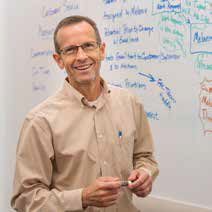
Specialty areas: process improvement, floor design/redesign, industrial engineering, Lean and Six Sigma, value stream mapping
“We go in and take a look at a client’s current strategies and then offer workflow recommendations and identify areas where they can reduce waste and error. One client had three different drop-off points for incoming specimens. We consolidated it to one drop-off area to reduce confusion and duplication of resources. We share ideas about introducing Lean into the lab, often by value stream mapping a client’s processes. For example, if an assay has a technician going between three different benches, we find ways to reduce it.”
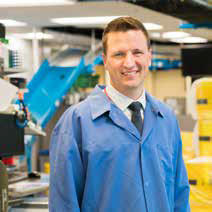
“I spent nine years in a clinical lab setting so that comes in handy too in helping clients with processing and support in a hospital laboratory. We’ll work with clients on how to build a call center within a hospital lab or how to manage calls better with their existing staff. We break it down into steps—really getting into the specifics. We can help with managing and tracking specimen issues; for example, a recommendation might be to electronically tag a problem specimen so it won’t sit too long or be forgotten about when a shift change happens.”
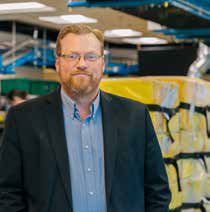
“I help with streamlining the movement of specimens from outreach, internal departments, or outside facilities into the lab. Past experience overseeing phlebotomy, specimen processing, and referral testing helps me have an overall view of workflow from the patient to the testing lab. For one client, I worked with their courier team on delivery logistics. Their pickup/drop-off times made sense to them, but these times didn’t support turnaround times in the lab. We recommended how they could get more specimens per run, decrease turnaround by avoiding specimens sitting overnight or coming in late.“
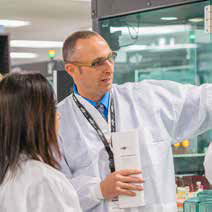
We provide the analysis for complete hospital connectivity to doctors, or just for certain components. One client had us look at their utilization management, business development, lab operations, and transportation—they wanted full integration of all these areas.”
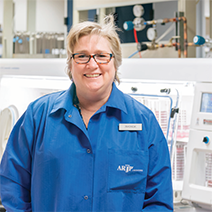
“One client wanted us to look for inefficiencies in their microbiology department, so our recommendations primarily focused on ways that would save time and rid processes of unnecessary steps. We provided more than 40 recommendations. We suggested a faster method for 22 identification of yeast that didn’t cost a cent but improved turnaround by 24 hours. We pointed out where they could eliminate some steps in culture reads and provided an easier way to process ova and parasites.”
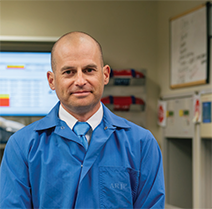
"My expertise is in my experience. Often, I can quickly understand the issue a hospital lab is facing because we’ve had that same challenge and had to come up with solutions. For example, one client was being overwhelmed with a lengthy registration process for outpatients needing lab work. We recommended a self-service kiosk that integrates with the hospital systems to move that front-end stress off of the lab employees and also provide a smoother process for outpatients.”
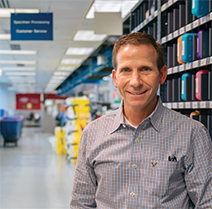
“Most everything we do falls into three main categories: removing interferences, improving efficiencies, and improving quality. We’ll show clients how to improve their processes, like how to build in daily quality controls such as function checks for their freezer and refrigerators. Daily, someone needs to record the temperatures in their system to make sure they are within the correct range. If temps are outside this range, then the employee needs to document what they did to address the issue. The capturing and required review of this information can be automated to help a client improve patient care and meet regulatory requirements.”

















 HOME
HOME